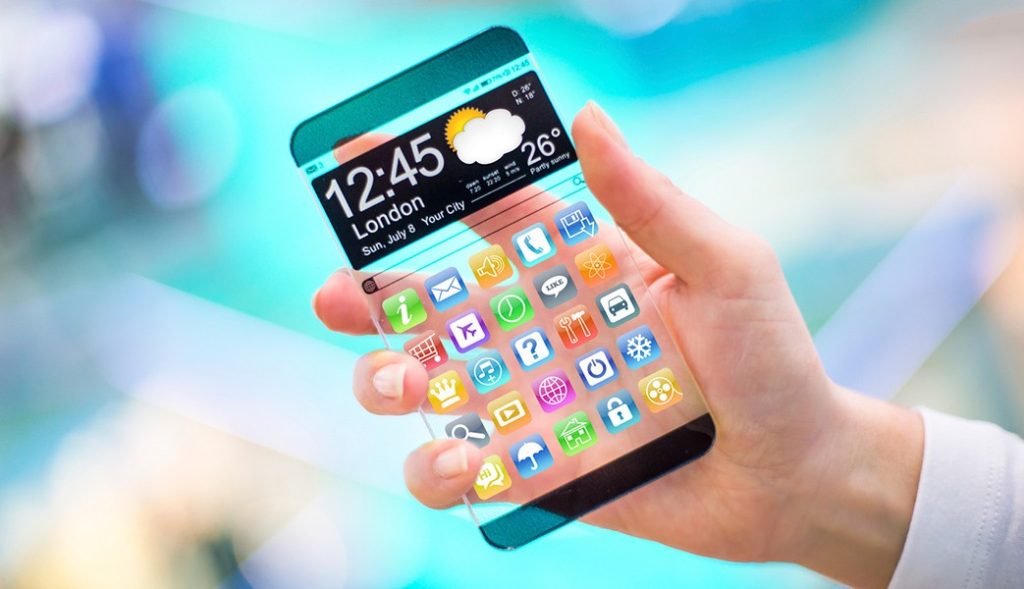The smartphone industry is evolving faster than ever. What began as simple calling devices has now turned into all-in-one smart hubs that manage our work, entertainment, and even health. But what comes next?
By 2030, smartphones as we know them may not even exist — or at least, they’ll look drastically different. Let’s explore how emerging technologies like AI, AR, foldable glass, and holographic displays are shaping the phones of the future.

🔮 1. AI Will Be at the Core of Everything
AI is already powering our devices — from voice assistants to photo editing. But by 2030, artificial intelligence won’t just assist; it will anticipate.
Future smartphones will:
- Learn your habits — adjusting settings, brightness, and app suggestions automatically.
- Predict your needs — such as scheduling reminders before you even think of them.
- Enhance security — with behavioral biometrics that identify users by how they move, type, or even speak.
📘 Example: Google’s Gemini OS and Apple’s iOS 20 (rumored for 2030) may feature fully AI-driven interfaces that act like personal digital butlers — not just assistants.
🧠 2. No More Screens — Think Holograms & AR Projections
Imagine answering a video call that pops up as a 3D hologram in front of you. That’s not science fiction anymore.
By 2030, smartphone companies like Samsung, Apple, and Xiaomi are expected to integrate micro-projection and holographic tech that eliminates the need for traditional flat screens.
These devices could:
- Project AR workspaces on any surface.
- Display 3D movies or holographic FaceTime calls.
- Offer gesture-based controls instead of touchscreens.
💡 External link suggestion: Learn more about holographic display technology on HowStuffWorks
🌀 3. Foldables and Rollables Will Dominate the Design
The success of devices like the Samsung Galaxy Z Fold 6 and Google Pixel Fold has proven that foldables are more than a fad. By 2030, expect:
- Fully rollable phones that expand from 5 inches to 10 inches.
- Self-healing materials that automatically repair small scratches.
- Liquid metal frames that adjust shape for portability.
📱 Example: TCL and Oppo are already testing prototypes of rollable phones that extend with a swipe — and experts predict these will go mainstream before 2030.
🔋 4. Battery Life Could Last a Week (or Charge Itself)
Battery tech is one of the biggest pain points today, but it’s rapidly evolving. Expect graphene batteries that charge in under five minutes and last several days.
Even more futuristic: solar and kinetic charging could mean you’ll never need to plug in your phone again.
By 2030, we might see:
- AI-optimized energy use that extends battery life dynamically.
- Wireless charging zones in public areas.
- Phones powered by body heat or movement.
🔗 Internal link idea: Check our post on Top Battery Innovations to Watch in 2025
🌐 5. Seamless Integration with Wearables and Implants
The future of smartphones might actually be your body. Experts predict that by 2030, the smartphone could merge with wearable or implantable devices.
For instance:
- Smart lenses could project AR interfaces directly onto your eyes.
- AI earbuds might act as continuous translators or assistants.
- Brain-computer interfaces could let users control apps by thought alone.
Companies like Neuralink, Meta Reality Labs, and Apple Vision are already investing in this direction.
🔒 6. Security Will Be Biometric and Behavioral
Forget passwords and face scans — the next generation of security will rely on who you are, not what you know.
By 2030, devices may identify users by:
- Typing rhythm
- Voice pitch variations
- Gait and posture analysis
This level of personalization will make hacking nearly impossible, but it will raise new privacy concerns.
💡 Related article: How to Protect Your Online Privacy in 2025
🪄 7. The Smartphone Might Disappear Altogether
Some futurists believe the “smartphone” will fade away by 2030 — replaced by AI assistants embedded in glasses, watches, or implants.
Instead of pulling out a device, you might just say:
“Hey Aura, send that report to Dinnerah News and schedule a meeting for 2 PM.”
Your invisible digital companion would handle the rest.
🚀 Conclusion: The Smartphone Revolution Has Just Begun
By 2030, smartphones will become smarter, thinner, and maybe even invisible. They’ll merge with AI, holograms, and the human experience itself.
The journey from the iPhone 1 in 2007 to holographic, AI-driven devices in 2030 shows one thing — the future of smartphones isn’t just about screens or chips. It’s about connection, convenience, and intelligence.
